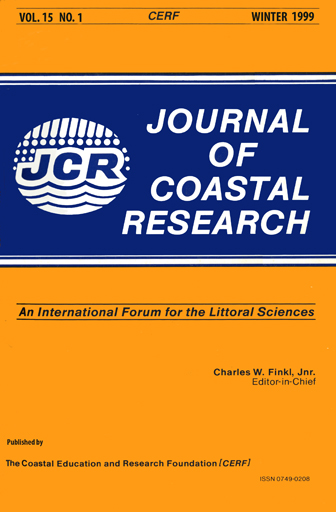A Cross-Shore Transport "Shape Function" for High Energy Beaches
Keywords:
Surf zone, sediment transport, field studies, energetics modeling, velocity moments.Abstract
Field measurements of cross- shore velocities were obtained, using electromagnetic current meters from morphodynamically reflective intermediate and dissipative macrotidal beach sites during high energy conditions. The dominant velocity moments outside the surf zone were found to predict (1) onshore transport associated with the short wave skewness. (2) onshore transport associated with short wave stirring and transport by a weak mean onshore flow and (3) offshore transport due to short wave stirring in long wave troughs. lnside the surf zone the dominant velocity moments predicted (1) offshore transport caused by both short and long wave stirring and subsequent offshore transport by the undertow, (2) weak onshore transport associated with the short wave skewness, and (3) at the dissipative site, offshore transport associated with the long wave skewness.
By plotting the normalised velocity moments for all the field sites against normalised depth, a second order polynomial shape function was produced for the total velocity moment, which predicts onshore transport seaward of the surf zone decreasing in magnitude towards the breakpoint, and offshore transport inside the surf zone increasing in magnitude towards the shoreline. It is suggested that this shape function represents a quasi-universal cross-shore sediment transport spatial distribution curve for high energy beaches.


